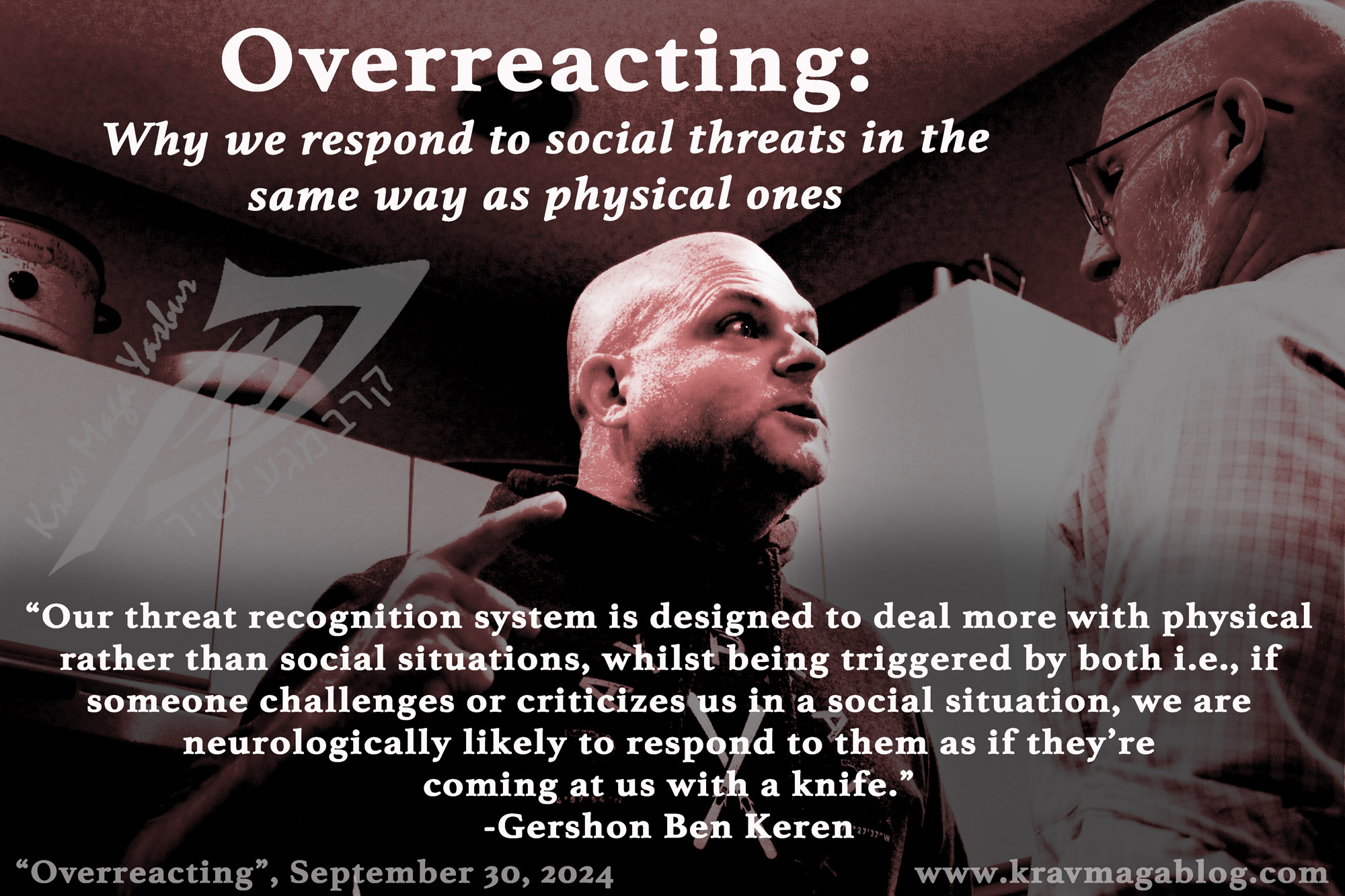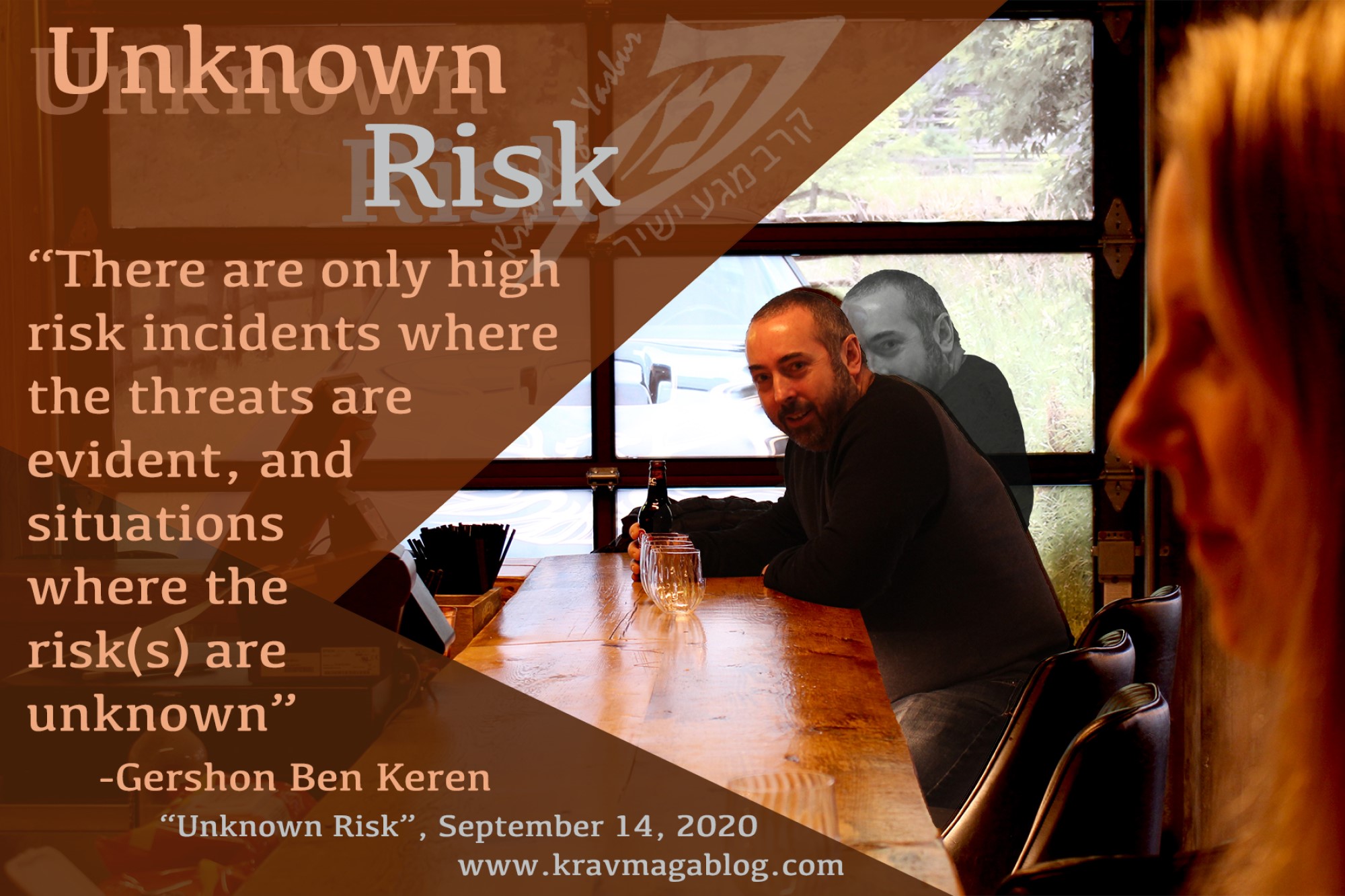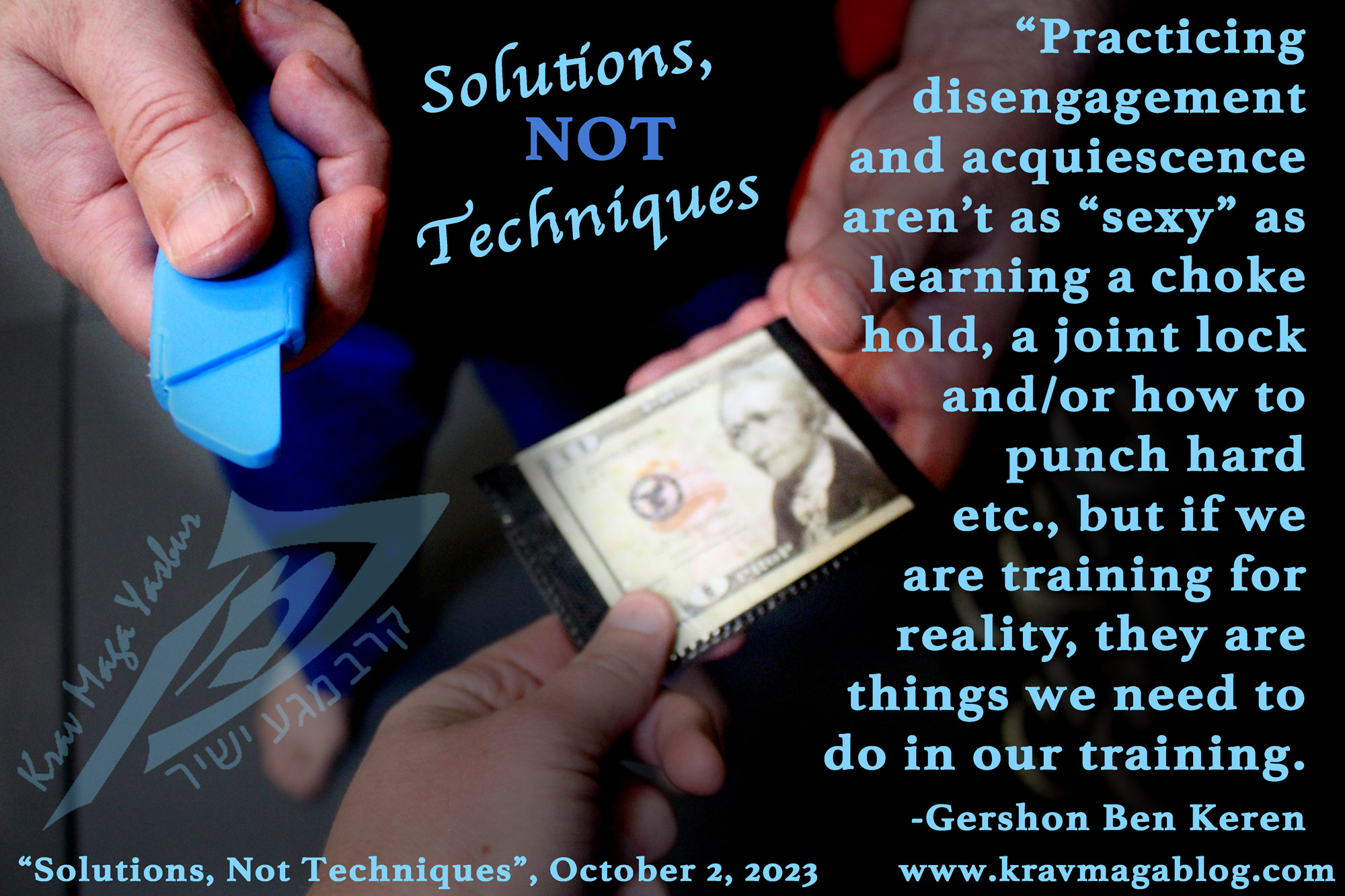Solutions not Techniques, is an article written by Gershon Ben Keren, a 5th Degree Black Belt in Krav Maga, who teaches Krav Maga in Boston, MA. He has also authored three Amazon best-Selling Books on Krav Maga.
I’ve written before about scenario-based training for self-defense, and why I believe it’s not only important but essential. Training “techniques” is great but without putting them into context, they merely become choreography. Full-on scenario-based training can be time consuming to set up, as participants need to be “trained” to play roles and act on pre-built decisions e.g., if someone does this then do that, but if they do this then do that etc. However, simple contexts can be trained in regular classes, with simple decision-making being trained etc., and this is important, because how we train is how we act. This was brought home to me on a close-protection course (learning to be a “bodyguard”) I attended many years ago. Towards the end of the course, we were starting to work through scenarios that replicated real-life situations. These scenarios forced us to act and work under a certain degree of stress and duress – enough that we often had little time to think and decide upon what to do i.e., we had to act in the moment. There were a couple of participants on the course who were ex-law enforcement, looking to transition into close protection. Often, they would try and engage with assailants at the expense of disengaging with the principle (the person they were meant to be protecting). Under pressure they did what LEO’s (Law Enforcement Officers) are called to do, which is to engage with those who represent a threat/danger. When the heat/pressure was on, this is what they defaulted to, despite “knowing” that their primary goal, in these scenarios, was to disengage with the person they were protecting. In the classroom they could tell you exactly what they should do, but under pressure they did what years of training and experience had taught them. If you don’t consistently train something you think is right/believe in but only talk about it, then come the time, it is unlikely you will do it, this is why experiential learning is so important. In this article I want to talk about two things that are often given as “advice” in reality-based self-defense but rarely trained: disengaging and handing over assets.
Many people train self-defense and fighting systems so that they can learn to engage/fight with an aggressor; few – at least initially – train with the goal of disengagement. However, disengagement is the way a fight/violent encounter conclusively ends. That’s when it is truly over i.e., when you are in a different location to your assailant. However, many people envisage that this outcome involves either their aggressor disengaging due to being completely overwhelmed, or being left in a bloodied pile on the floor unable to continue etc. This is a matter of ego, not survival. The outcome of/for an aggressor/assailant is really an irrelevant matter. I care about myself, not the other person. This is the essence of close protection, making sure the principle (the person you are looking after) gets home safely and unharmed, rather than punishing and/or teaching a lesson to those that mean them harm. If you train a particular technique and after performing it remain in the same place as your partner you are not practicing solutions to violence, merely techniques to deal with a specific attack or threat. If you are training to escape from a rear-strangle, a side-headlock, a guillotine, then after doing so, run a few steps and make distance between you and your partner. Train “getting away”. If you practice stomping the head when you’ve put someone on the ground stop doing it – you are no longer in imminent danger, you have a chance to disengage, and so by doing so you lose your claim/right of self-defense. How you end practicing a technique is likely to be what you do in reality e.g., if after completing a technique you stay with your partner and don’t “run”, that is the context you are training, and that is what you are likely to do. If in training you throw someone to ground, and then follow them there, and/or stomp kick their head, that is your context, and that is what you are likely to do – and you shouldn’t refer to it as “self-defense” (the argument that they “could have had a knife/gun” etc. doesn’t carry much legal weight). In training knife attacks, when a knife is pulled, and you see it, do you always wait to block an attack, or do you practice turning and running before an attack is made? After “successfully” or even “partially” blocking do you practice disengaging? If training knife attacks under pressure and you fail, do you practice disengaging, or doggedly pursue a technique attempting to make it work, when you’d be better cutting your losses and running? Training when and how to disengage as safely and as quickly as possible is an important part of training to survive.
An important part of training for reality should involve not only training to disengage but training not to engage, and when to comply with a demand/threat. If someone wants/demands your assets, such as your wallet, phone and/or laptop, it is safer to comply than resist. The person(s) may not be displaying a weapon, but it should be assumed that they have one on them in order to enforce their demands if denied. For them there is one outcome, they leave with your assets, the variable is whether you are harmed in the process – and they are probably experienced and practiced in this. When training how to deal such threats we should not only train physical solutions – as, if after complying with their initial demand they don’t leave, we may have to do so - we should also actively train compliance i.e., mimicking handing over something, or actually handing over something, and not engaging physically. I will sometimes give students some fake money so that this physical transaction takes place. This may seem like play-acting and unnecessary, however it helps overcome our evolutionary reluctance to part and/or leave the things we possess. Human beings for millennia have relied upon tools for survival. In our earliest days the loss of a pot for cooking, and/or a knife for cutting could result in us failing to survive. This is why we have to be told not to gather our belongings in the event of a fire, because we have a natural and inherent proclivity to do so. Under stress and duress, such as with a fire or when dealing with a potentially violent aggressor, these emotional urges often override our conscious knowledge and understanding of what the right thing to do is. Which is why we have to train things such as handing over the wallet etc.
Practicing disengagement and acquiescence aren’t as “sexy” as learning a choke hold, a joint lock and/or how to punch hard etc., but if we are training for reality, they are things we need to do in our training. Merely paying these things lip-service and saying “yeah, yeah, but I would do that in reality”, is not the same as practicing them, and is not any guarantee that this is what you will actually be inclined to do. Training for reality means training the things that you are actually going to do in real-life situations. If you only ever train to engage this in all likelihood is what you will do.
0 COMMENTS















